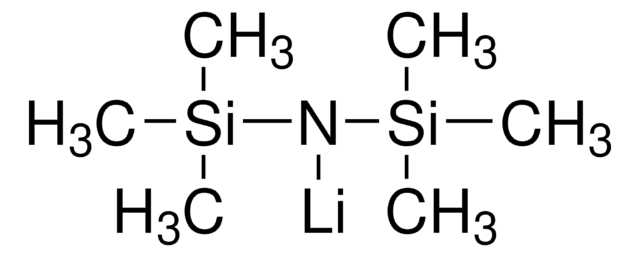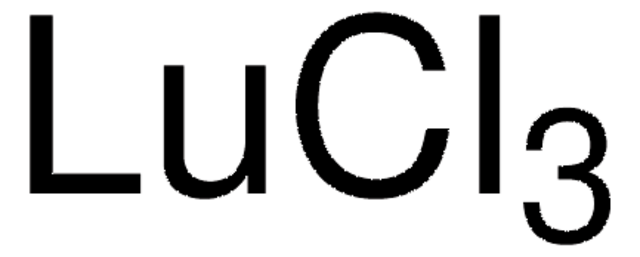547980
Tris[N,N-bis(trimethylsilyl)amide]samarium(III)
98%
Synonym(s):
1,1,1-Trimethyl-N-(trimethylsilyl)silanamine samarium(III) salt, Tris(1,1,1,3,3,3-hexamethyldisilazanato)samarium
About This Item
Recommended Products
Assay
98%
form
solid
reaction suitability
core: samarium
reagent type: catalyst
mp
93-106 °C (lit.)
SMILES string
C[Si](C)(C)N([Sm](N([Si](C)(C)C)[Si](C)(C)C)N([Si](C)(C)C)[Si](C)(C)C)[Si](C)(C)C
InChI
1S/3C6H18NSi2.Sm/c3*1-8(2,3)7-9(4,5)6;/h3*1-6H3;/q3*-1;+3
InChI key
MUFPZLRACJKLCI-UHFFFAOYSA-N
Related Categories
Application
- Heterobimetallic samarium(III) complexes
- Binuclear lanthanide complexes
Catalyst for:
- Coordination polymerization of renewable butyrolactone-based vinyl monomers
- Intramolecular hydroamination of non-activated alkenes
- Chiral functionalization of isoxazoles
- Enantioselective hydroamination / cyclization
Signal Word
Danger
Hazard Statements
Precautionary Statements
Hazard Classifications
Flam. Sol. 1 - Skin Corr. 1B - Water-react 2
Supplementary Hazards
Storage Class Code
4.3 - Hazardous materials which set free flammable gases upon contact with water
WGK
WGK 3
Flash Point(F)
36.0 °F - closed cup
Flash Point(C)
2.2 °C - closed cup
Personal Protective Equipment
Choose from one of the most recent versions:
Already Own This Product?
Find documentation for the products that you have recently purchased in the Document Library.
Our team of scientists has experience in all areas of research including Life Science, Material Science, Chemical Synthesis, Chromatography, Analytical and many others.
Contact Technical Service![Tris[N,N-bis(trimethylsilyl)amide]yttrium](/deepweb/assets/sigmaaldrich/product/structures/867/983/5b7cb7cd-8879-49e4-a9d7-29c52aaa82a0/640/5b7cb7cd-8879-49e4-a9d7-29c52aaa82a0.png)





![1,8-Diazabicyclo[5.4.0]undec-7-ene, polymer-bound 100-200 mesh, extent of labeling: 1.5-2.5 mmol/g loading, 1 % cross-linked with divinylbenzene](/deepweb/assets/sigmaaldrich/product/structures/198/416/1df5854b-ea20-4d3a-a11f-73abb549da60/640/1df5854b-ea20-4d3a-a11f-73abb549da60.png)



